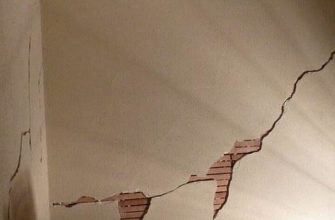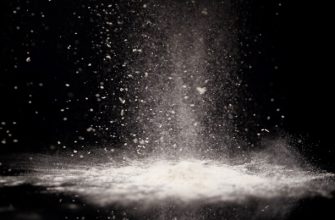Spackle is a type of filler that’s used to fill cracks and holes in walls and ceilings. Because it’s made of sand and water, the spackle is not strong enough to hold up against the weight of a particleboard layer. This means that the spackle will eventually wear away and the particle board will show through. If you want to use spackle on particle board, be sure to use a stronger filler like plaster or joint compound.
- What is a particle board?
- Can you use a spackle on a particle board?
- Advantages and disadvantages of using spackle on particle board
- Advantages:
- Disadvantages:
- How to use spackle on particle board
- Priming and Preparation
- Raw edges
- Particle Board should be stained or varnished
- Your Particle Board Can Be Painted
- Other particle board options
- Conclusion
What is a particle board?
Particle board is a type of wood that’s typically used in construction applications. It’s made up of small, semi transparent particles that are glued together and then compressed into a solid piece.
One of the most common uses for particle board is in the construction of furniture. Because it’s so lightweight and easy to work with, it’s often used in place of traditional wood slabs or plywood. Additionally, particle board is often used as an underlayment for other materials, like tile or concrete, because it provides a strong foundation that won’t rot or decay.
Since particle board is such a versatile material, there are many ways you can use it in your home renovation or construction project. You can use it to build walls, floors and ceilings; create cabinets and shelving; and build furniture like desks and chairs.
Can you use a spackle on a particle board?
Spackle is a type of filler that can be used on particle board. It is a two-part compound that is applied between the layers of particle board to fill in cracks and voids. Once it’s dry, the spackle is hard and impervious to water and other chemicals.
Because spackle is a two-part compound, it’s important to make sure that you use the correct proportions when applying it. If you use too much, it will become difficult to sand and finish the surface correctly. However, if you use too little, the spackle won’t have enough strength to hold the particles together and it will eventually peel off.
Overall, using spackles on particle boards is a good way to repair or replace damaged surfaces. Make sure to follow the instructions carefully so you get the best results possible.
Advantages and disadvantages of using spackle on particle board
Some people believe that spackle can be used on particle board, while others believe that it’s not a good idea. Here are the advantages and disadvantages of using spackle on particle board:
Advantages:
- Spackle is a filler and sealant that can be used to fix cracks and gaps in drywall, plaster, and other wall coverings.
- It is available in a variety of colors, so you can choose the one that best matches the color of the particle board.
- It’s also weatherproof, so it can be used to fill in small cracks or holes in exterior walls.
- It’s relatively easy to apply and does not require extensive preparation or sanding before application.
Disadvantages:
- Spackle is not an optimal material for long-term use because it may eventually cause damage to the surface it’s applied to.
- It can take a long time to dry, so it must be applied in a rush if you need it right away.
How to use spackle on particle board
Spackle is a type of putty that is used to fill in holes or cracks in walls. It is a versatile material that can be used on a variety of surfaces, including particle board. Particle board is a type of manufactured wood that is made from small pieces of wood that have been glued together.
If you need to use a spackle on a particle board, the process is fairly simple.
First, you will need to gather your materials. There are a few things you need to keep in mind when using spackles on particle boards. You will need a putty knife, spackle, sandpaper, and a primer . Once you have all of your materials, you can begin the process of spackling the particle board.
Priming and Preparation
For particleboard with a paper wood-grain finish, a light sanding with fine-grit sandpaper eliminates filth and scuffs up the surface sufficiently to receive primer. Don’t worry about removing all of the laminate throughout the sanding procedure. The idea is to generate enough texture on the material so that the new paint adheres easily.
The primer is essential for achieving a satisfactory paint finish on particle board. Remember that primers come in a variety of hues, so choose one that matches the colour you intend to apply. Latex, a water-based primer, causes particleboard to swell and should not be used. To prepare the surface for painting, a solvent-based primer such as oil or lacquer is required.
Raw edges
Such as a cut edge with apparent loose wood particles, must be sealed before primer or paint can be applied. When dry, drywall compound applied with a fingertip and lightly sanded seals the particle board edges.
Second, use a light coat of spackle on the surface of the particle board, once the spackle is in place, you will need to smooth it out and then cover it with plastic wrap. Leave it undisturbed for at least 24 hours so that the spackle can dry properly. Finally, apply more spackle if necessary to fill any gaps or cracks.
Particle Board should be stained or varnished
If you want to change the appearance of the particle board while also protecting it, you might try varnishing or staining it. Staining wood is often done to modify the colour and offer some protection, whereas varnishes are primarily designed to protect the wood but may or may not change its appearance. As a result, if changing the appearance of the particle board is your major goal, you should apply stain.
Sealing the particle board will also improve its ability to withstand moisture and sunshine, prevent rot, make it more robust, and, of course, maintain its visual attractiveness. Although this works for outdoor reasons, staining particle board will not make it completely waterproof, thus it is best used indoors.
Your Particle Board Can Be Painted
If you want your particle board to seem as much like genuine wood as possible, you may achieve this appearance by painting what will appear to be a wood grain onto your particle board with a glaze that has a brown hue. Simply apply a layer of varnish to complete the design when that is finished. You may use the same methods we just provided to paint your particle board a different color by substituting a new paint color for the brown hue.
Other particle board options
If you are really determined and want the ultimate in elegance (and are adept at this sort of thing), buy a roll of oak (or whichever other hardwoods you want) veneer and some contact glue. Water-based adhesives should be avoided since they are incompatible with particle board.
Look for a how-to book. Veneering isn’t difficult, but there are several complex aspects that I won’t go into here. A fake finish is another possibility. Nowadays, you can’t walk into a paint store without falling across where-with-all and books instructing on how to execute faux finishing.
Conclusion
To summarize, spackling a particle board is not a simple process, but it is certainly achievable with the correct tools and instructions. You may ensure that your project is finished successfully and without difficulty by following these simple procedures.









